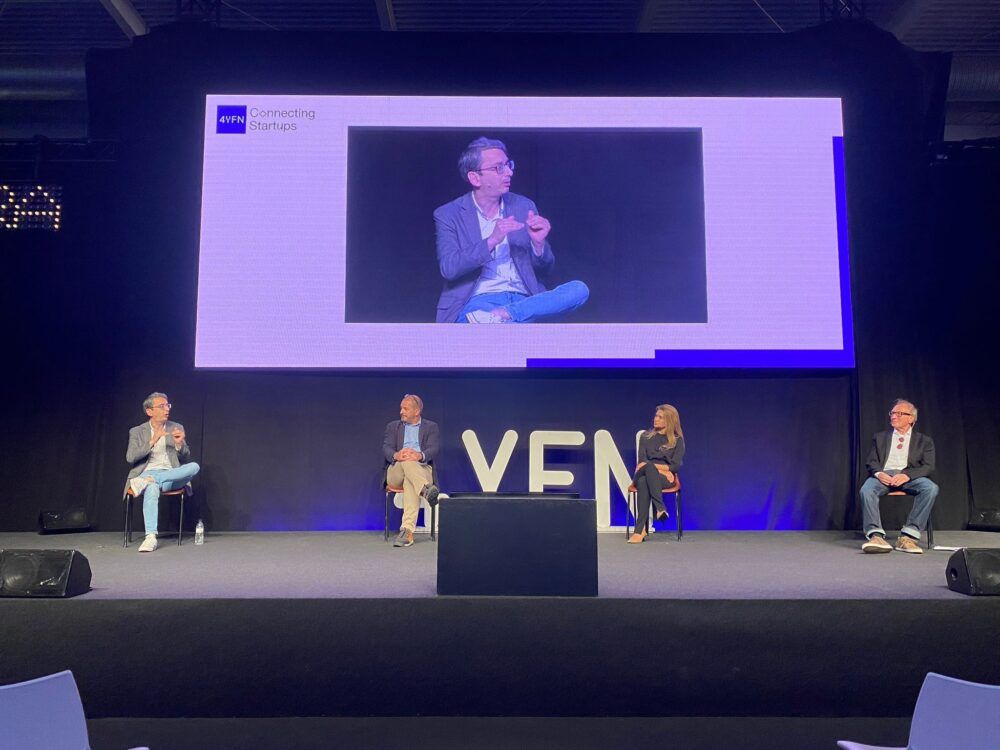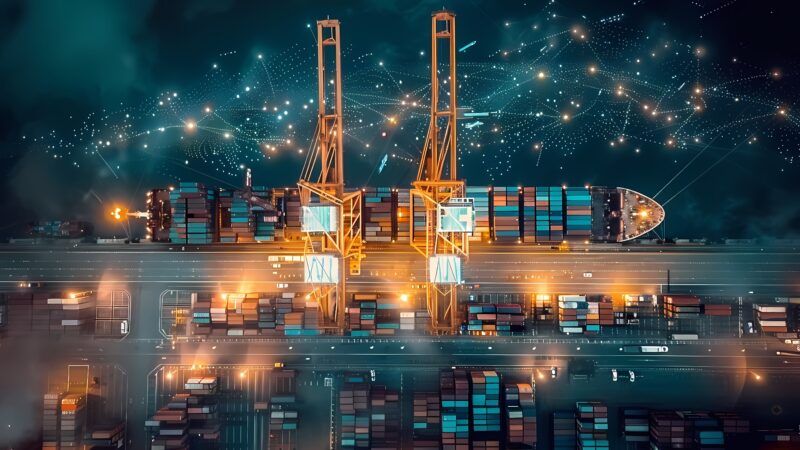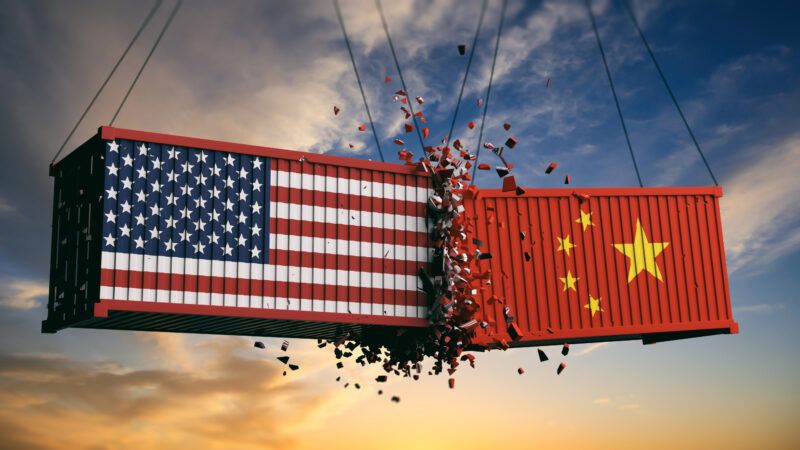 Ports are the perfect candidates for testing technologies. And the fairs and congresses, the best scenario to demonstrate it. (Port of Barcelona)
Ports are the perfect candidates for testing technologies. And the fairs and congresses, the best scenario to demonstrate it. (Port of Barcelona)
Ports and technology fairs: a display for the present and the future
Ports are increasing their participation in the world's leading technology fairs. Why? The main reason is that these events create connections between smart ports and start-ups that introduce solutions to many of the challenges the Industry 4.0 faces. If these fairs were a dating application, it could be said that ports and technology companies seek a match.
 Ports are the perfect candidates for testing technologies. And the fairs and congresses, the best scenario to demonstrate it. (Port of Barcelona)
Ports are the perfect candidates for testing technologies. And the fairs and congresses, the best scenario to demonstrate it. (Port of Barcelona)
Until a few years ago, port authorities and the maritime-port sector in general had an active participation in congresses and conferences related only to their industry, whether of a general or specific nature.
Attendance at technology-related events was the exception. In recent times, however, both ports and operators have increased their presence beyond their traditional environment.
For Eduard Martín, CIO and director of 5G at Mobile World Capital Barcelona, this has a clear explanation: “these events generate an ecosystem between agents of Industry 4.0, including ports, and the start-ups that have solutions to many of the challenges they face,” he says.
Thus, there are more and more examples of ports attending the main technology fairs in the world. One of the most powerful: Antwerp, Barcelona, Busan, Hamburg, Los Angeles, Montreal and Rotterdam at the Smart City Expo World Congress under the joint name of Smart Ports: piers of the future.
The natural next step was for tech companies to display the fruits of their love for ports in the display windows, following the dating app metaphor. An example has been the congress linked to start-ups that is held in parallel to the Mobile World Congress (MWC) in Barcelona, 4YFN, in which various pilots and developments involving ports were presented.
Tested solutions
In the 2021 edition of the Mobile World Congress, various solutions developed in port environments have been shown, highlighting how technology fairs reflect the growing link between ports and technology disruptors.
1. Pilot Test Sea Rescue + 'Pediatric Emergencies in Maritime Environments
Developed to improve maritime medical assistance, this pilot test recreated a cardiac emergency suffered by a minor on a boat located in the waters of the Port of Barcelona. The alert was given by a subcutaneous pediatric device that the minor was wearing and which transmitted the signal to the Emergency Medical System (SEM, in Spanish).
Simultaneously, the alert reached the cardiology service of the Sant Joan de Déu Hospital, which remotely examined the device. Once the seriousness of the situation had been verified, the hospital asked the SEM to activate the protocol to attend the patient.
Remotely and in real time, the SEM connected with a cardiologist from that hospital through a high-resolution 5G tablet and, following her instructions, they managed to stabilize the patient. Subsequently, thanks to the ultra-portable Philips Lumify ultrasound machine and a 5G mobile used as a router, an echocardiography was performed to assess the patient's health in more detail.
Promoted through the 5G Barcelona initiative, the Sant Joan de Déu Hospital, Vodafone, the Port of Barcelona and the Maritime Rescue and Safety Society (SASEMAR), with the collaboration of Philips and Biotronik, this pilot demonstrates how 5G technology can save lives. Also in a maritime environment.
2. Telefónica + APM Terminals
Telefónica, APM Terminals and Mobile World Capital presented another port project at the MWC. On this occasion, to coordinate port traffic at the Port of Barcelona container terminal and anticipate potential accidents.
The solution natively connects the terminal cranes with other cranes, as well as with APMT trucks and personnel. The latter had an application for the smartphone that warns in real time when there may be a physical security problem, such as a crash or run over.
“The most difficult challenge was to obtain centimeter precision of the different elements of the port. To do this, a GNSS antenna and an RTK server were installed on the client and, together with edge computing, a real-time position rectification was carried out, necessary to avoid accidents,” a Telefónica spokesperson explains.
Carles Rúa, Head of Strategic Projects and Innovation at the Port of Barcelona:
"This diversification of events will grow in the future as a result of a greater plurality of the port activity itself"
Moreover, this solution also performs predictive maintenance functions thanks to the Internet of Things (IoT), allowing to measure the deterioration of the machines and anticipate possible repairs, as well as to carry out business analytics. This is possible because the 5G network allows the deployment of many more IoT sensors.
3. Bilbao Port Authority + AllRead
El algoritmo que logra leer las matrículas, incluso si están deterioradas o bajo condiciones meteorológicas adversas, está alojado en el edge computing de Telefónica, ampliando la funcionalidad de las cámaras y garantizando el control del portón de acceso en un tiempo mínimo desde la red, al disponer la compañía de telefonía de estas capacidades de inteligencia artificial muy cercanas a la ubicación del Puerto de Bilbao.
The third and final port-related solution at MWC was the one presented by the Port of Bilbao and the start-up AllRead. Both collaborate in the implementation of a software with artificial vision designed by the startup to optimize access control, improving security management and guaranteeing fluidity in port operations.
The algorithm that manages to read license plates, even if they are damaged or under adverse weather conditions, is housed in Telefónica's edge computing, expanding the functionality of the cameras and guaranteeing access gate control in a minimum network time, as Telefónica’s artificial intelligence capabilities are located very close to the Port of Bilbao.
“Thanks to edge computing and the machine learning capabilities deployed, the execution of the calculation is accelerated, carried out in real time to reduce waiting times at the entrances and exits of the port area. Regarding the cameras installed in the port, the traffic generated by them was redirected so that the data reached the edge which would compute and identify the number plate,” they shared from Telefónica.
The Port of Barcelona at the 4YFN
Another example of the presence of ports in technological events was the participation of the Port of Barcelona with its own stand, for the first time, at 4YFN, the start-ups event belonging to the MWC. The stand registered more than 80 visits from companies such as Huawei or Orbiwise, which develops advanced technologies for the IOT industry, and also from Cinkventuring, a consultancy specialized in the design, development and implementation of entrepreneurship and open innovation programs.
Carles Rúa, Head of Strategic Projects and Innovation at the Port of Barcelona, spoke at the session entitled "Industry 4.0: when cognitive and connectivity technologies meet agile companies."
Regarding the growing participation of ports in technological fairs and congresses, Rúa justifies the interest because the increasing digitization of port environments entails a greater demand for technological developments to implement it.

Port initiatives and leadership in fields such as energy transition and sustainable transport, priorities for many other industries, make technology fairs an excellent window to share these experiences with other sectors.
“This diversification of events will grow in the future as a result of a greater plurality of the port activity and its growing technification. The leading ports should become benchmarks and technological tractors beyond their sector of activity,” explained Carles Rúa.
Replicate city dynamics in a controlled environment
For the Port of Barcelona’s head of innovation, ports are currently increasing their role as test benches for all kinds of technologies. Especially, for demonstrating their integration in complex environments.
As stated by the 5G Program Director at Mobile World Capital Barcelona, Eduard Martín, the most interesting factor is that these are environments that practically replicate the city’s dynamics but in a controlled and perimeter-closed area.
This makes ports the perfect candidates to test and, above all, scale these technologies to expand and improve city services. And fairs and congresses provide the best display to prove this.






